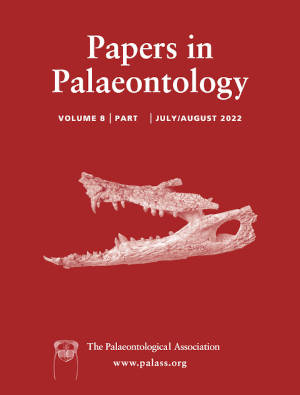Article: Evolution of filter-feeding in aquatic insects dates back to the Middle Triassic: new evidence from stem-group mayflies (Insecta, Ephemerida) from Grès à Voltzia, Vosges, France
Publication: Papers in Palaeontology
Volume:
8
Part:
4
Publication Date:
2022
Article number:
e1456
Author(s):
Pavel Sroka, and Arnold H. Staniczek
DOI:
10.1002/spp2.1456
Abstract
Abstract In the aquatic insects, mayfly nymphs have developed a remarkable diversity of life strategies and feeding habits. However, the early evolution of these strategies and the role of mayfly nymphs in freshwater palaeoecosystems remain largely unknown. We investigated fossil mayfly nymphs from the Grès à Voltzia Formation from the Middle Triassic, France, which represents the oldest known outcrop yielding a diverse mayfly fauna. We focused on three species, namely Mesoplectopteron longipes, Vogesonympha ludovici and Triassoephemera punctata, and investigated both original type material and numerous previously unstudied specimens. As a result, we provide a new interpretation of their morphology, life histories, and systematics: the nymphs of M. longipes, V. ludovici and T. punctata were aquatic and at least the former two species undoubtedly lived in flowing water as passive filter-feeders. This finding represents the so far earliest occurrence of this feeding strategy in aquatic insects. The most obvious morphological adaptations to this lifestyle are long filtering setae arranged in rows on forelegs, analogous to some modern mayfly nymphs. We place the three investigated species M. longipes, V. ludovici and T. punctata in a newly established, unranked higher taxon, Sinebranchia, representing the sister group to Heptabranchia (Coxoplectoptera + Ephemeroptera). Sinebranchia share a single-segmented tarsus synapomorphic with Heptabranchia, but retain the plesiomorphic condition of double tarsal claws. Sinebranchia are also characterized by their autapomorphic lack of tracheal gills, probably connected to their life in flowing, well-oxygenated water.
